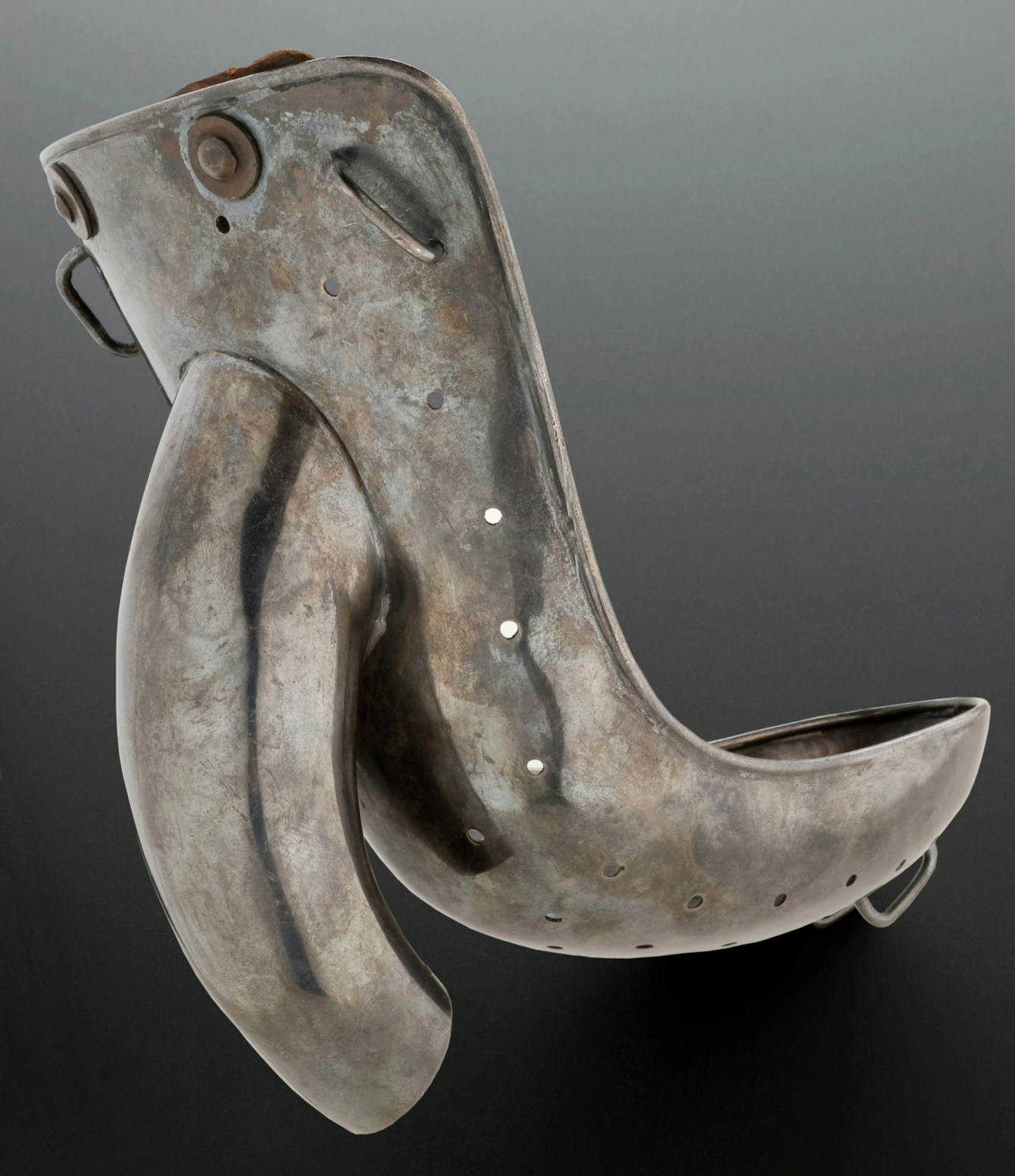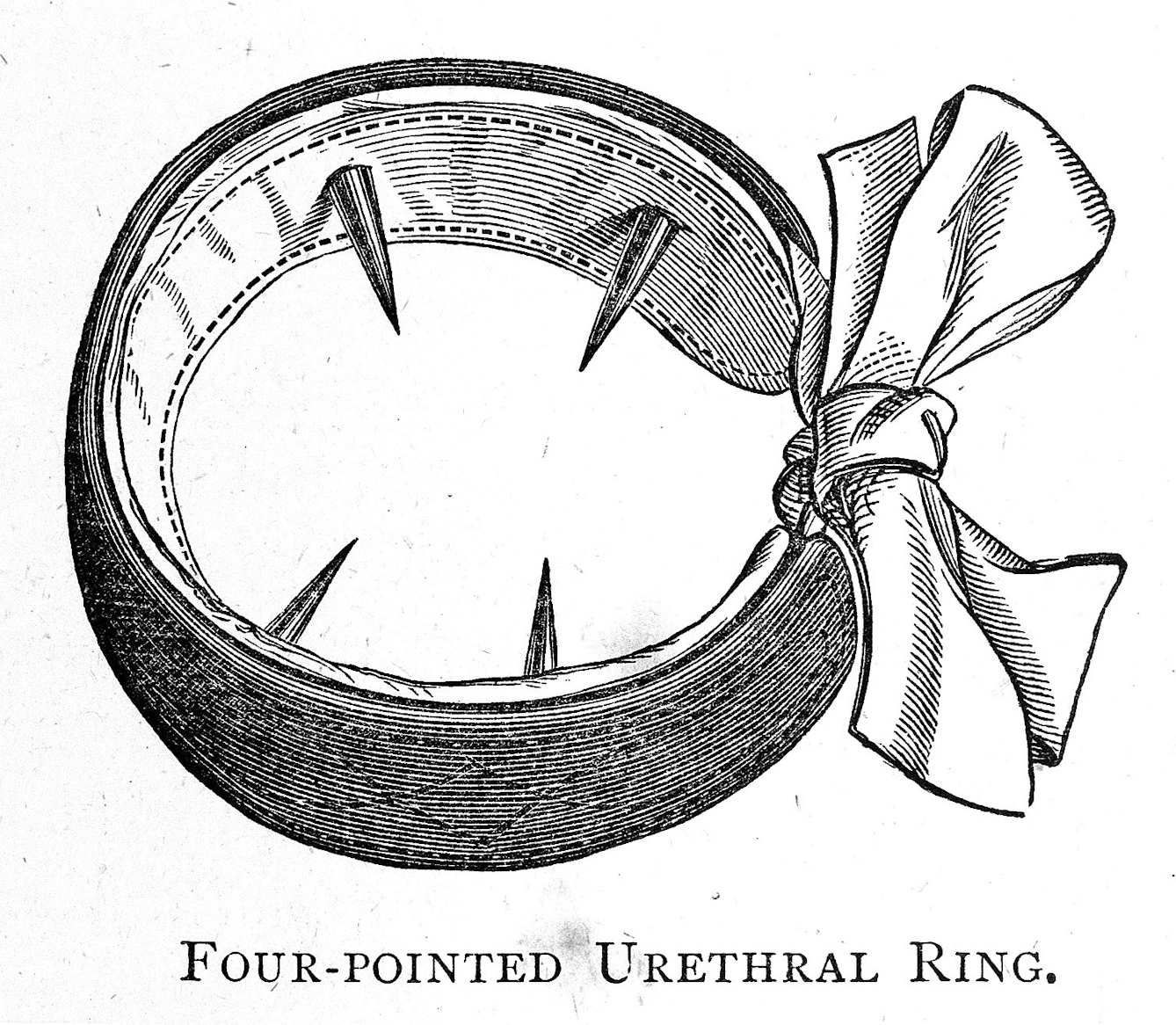Male masturbation has had a chequered past, characterised by shame, disapproval and anti masturbation campaigns. But recent scientific discoveries could begin to confer respectability on this solitary pleasure.
The history of the penis is truly fascinating. From the Roman priests of Cybele, who castrated themselves in frenzied ceremonies, to medieval theologians who recommended beans to cure impotence, as they believed an erection was caused by air inflating the penis, it’s been a bumpy ride for the demon rod.
But perhaps one of the worst periods in Western history for a gentleman's credentials was the 19th century. Masturbation – the solitary vice, self-pollution, onanism or 'jerkin’ the gherkin’' – fascinated Victorian doctors, who prescribed all manner of quack cures, ranging from the mildly amusing to the outright dangerous in the quest to stop masturbation once and for all.

Part of a male anti-masturbation apparatus, late 19th or early 20th century.
The Victorians have a reputation for extreme prudery, but the clampdown on masturbation was not just a moral issue, it was a medical one, as self-love was believed to be highly injurious to health.
MORE: The thousands of business cards selling sexual services collected from UK phone boxes
Although this may sound bizarre to our modern sensibilities, there was logic behind the belief. The French called an orgasm la petite mort (the little death) and with good reason. Post-orgasm, the charged penis becomes a more relaxed organ. In medical terms, this special time is known as the ‘male refractory period’ and it seemed to provide our ancestors with all the evidence they needed that an orgasm drained male energy. We still see echoes of this belief today when athletes abstain from sex before an event to maintain their peak performance.

Male displaying the effects of onanism, R J Brodie, 1845.
Anti masturbation
The fear that ejaculation drains the male body of its vitality is far older than the Victorians and can be traced back to the ancient world. Hippocrates taught that a healthy body required a balancing of the humours (blood, yellow bile, black bile and phlegm). Logically, losing too much seminal fluid would disturb this delicate balance and affect health. Aristotle believed that too much sex could stunt your growth and Plutarch advised men to "store up [his] seed".
But it was the work of Swiss physician Dr Samuel-Auguste Tissot (1728–97) that transformed an old superstition into a full-blown health crisis.
In 1758, Tissot published ‘Onanism: A Treatise on the Maladies Produced by Masturbation’. In it he argued that the loss of one ounce of semen equalled the loss of 40 ounces of blood, and that masturbation was the most damaging way to lose “liqueur séminale”. He claimed to have witnessed numerous patients’ health deteriorate after ejaculation, in some cases fatally: “He had an emission of semen without coition, which was immediately followed with fever, delirium, convulsions, and other violent symptoms, which caused death in four hours.” Tissot’s work set in motion a fierce anti-masturbation campaign that would last for the next 200 years.

Four-pointed urethral ring for the treatment of masturbation, 1887.
By the 19th century, medical theories that a loss of semen was seriously detrimental to health had become firmly established. Doctors warned men to conserve their ‘essence’ by avoiding fornication and masturbation, and by limiting sex within marriage. Numerous anti-masturbation devices were patented to prevent ‘spermatorrhea’ (weakness caused by loss of semen).
Sparse diets were also recommended to subdue lust, and purity crusaders emerged, such as John Harvey Kellogg (1852–1943), who manufactured his cornflakes to quell sexual desire. Kellogg was full of useful information for parents on how to ‘cure’ a child of the disease of masturbation.
A remedy which is almost always successful in small boys is circumcision, especially when there is any degree of phimosis [tightness of the foreskin]. The operation should be performed without administering an anaesthetic, as the brief pain attending the operation will have a salutary effect upon the mind, especially if it be connected with the idea of punishment, as it may well be in some cases. The soreness which continues for several weeks interrupts the practice, and if it had not previously become too firmly fixed, it may be forgotten and not resumed.
The sensible sexologists
It was the sexologists of the 20th century who finally put medical theories of spermatorrhea to bed (so to speak). In 1948, Alfred Kinsey proved that masturbation was an almost universal human experience, and in 1966 Masters and Johnson revealed exactly what happens to the male body before, during and after orgasm.
What’s more, scientific research continues to shed light on the health benefits of orgasm. We now know that orgasms do not pose a health threat but are actually good for you. Research carried out at Harvard University in 2017 found that men who ejaculated four or more times a week enjoyed a 33 per cent lower risk of prostate cancer compared with men who reported ejaculating one to two times a week throughout their lifetimes. Orgasms are now medically approved.
Just how many men had their unmentionables mangled by Victorian doctors in the quest to stamp out masturbation is unknown. But we are still living with the effects of all this today. Not only in the high rates of circumcision still practised in America today for non-religious reasons, but also in the sense of shame and guilt that, for many, still surrounds the ultimate expression of self-love.
About the contributors
Dr Kate Lister
Kate Lister is the creator of the award-winning online research project Whores of Yore, which seeks to build public engagement and disseminate research on the history of sex and sexuality through social media. She also lectures at Leeds Trinity University, and is widely published on the sex trade.

